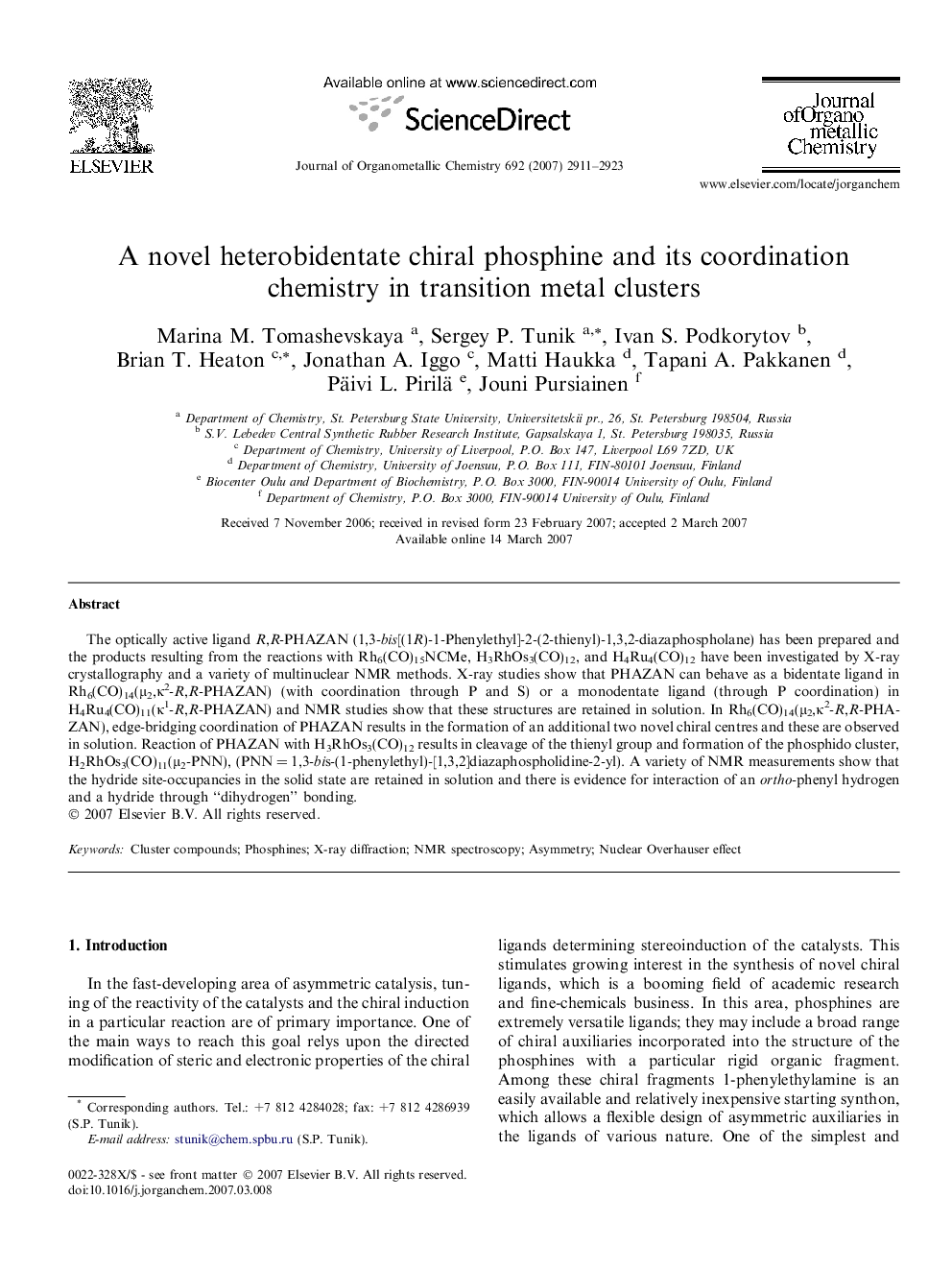| Article ID | Journal | Published Year | Pages | File Type |
|---|---|---|---|---|
| 1327266 | Journal of Organometallic Chemistry | 2007 | 13 Pages |
The optically active ligand R,R-PHAZAN (1,3-bis[(1R)-1-Phenylethyl]-2-(2-thienyl)-1,3,2-diazaphospholane) has been prepared and the products resulting from the reactions with Rh6(CO)15NCMe, H3RhOs3(CO)12, and H4Ru4(CO)12 have been investigated by X-ray crystallography and a variety of multinuclear NMR methods. X-ray studies show that PHAZAN can behave as a bidentate ligand in Rh6(CO)14(μ2,κ2-R,R-PHAZAN) (with coordination through P and S) or a monodentate ligand (through P coordination) in H4Ru4(CO)11(κ1-R,R-PHAZAN) and NMR studies show that these structures are retained in solution. In Rh6(CO)14(μ2,κ2-R,R-PHAZAN), edge-bridging coordination of PHAZAN results in the formation of an additional two novel chiral centres and these are observed in solution. Reaction of PHAZAN with H3RhOs3(CO)12 results in cleavage of the thienyl group and formation of the phosphido cluster, H2RhOs3(CO)11(μ2-PNN), (PNN = 1,3-bis-(1-phenylethyl)-[1,3,2]diazaphospholidine-2-yl). A variety of NMR measurements show that the hydride site-occupancies in the solid state are retained in solution and there is evidence for interaction of an ortho-phenyl hydrogen and a hydride through “dihydrogen” bonding.
Graphical abstractThe optically active new ligand R,R-PHAZAN has been prepared and the products resulting from the reactions with Rh6(CO)15NCMe, H3RhOs3(CO)12, and H4Ru4(CO)12 have been investigated by X-ray crystallography and a variety of multinuclear NMR methods.Figure optionsDownload full-size imageDownload as PowerPoint slide
